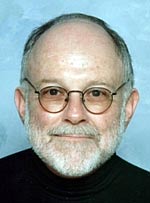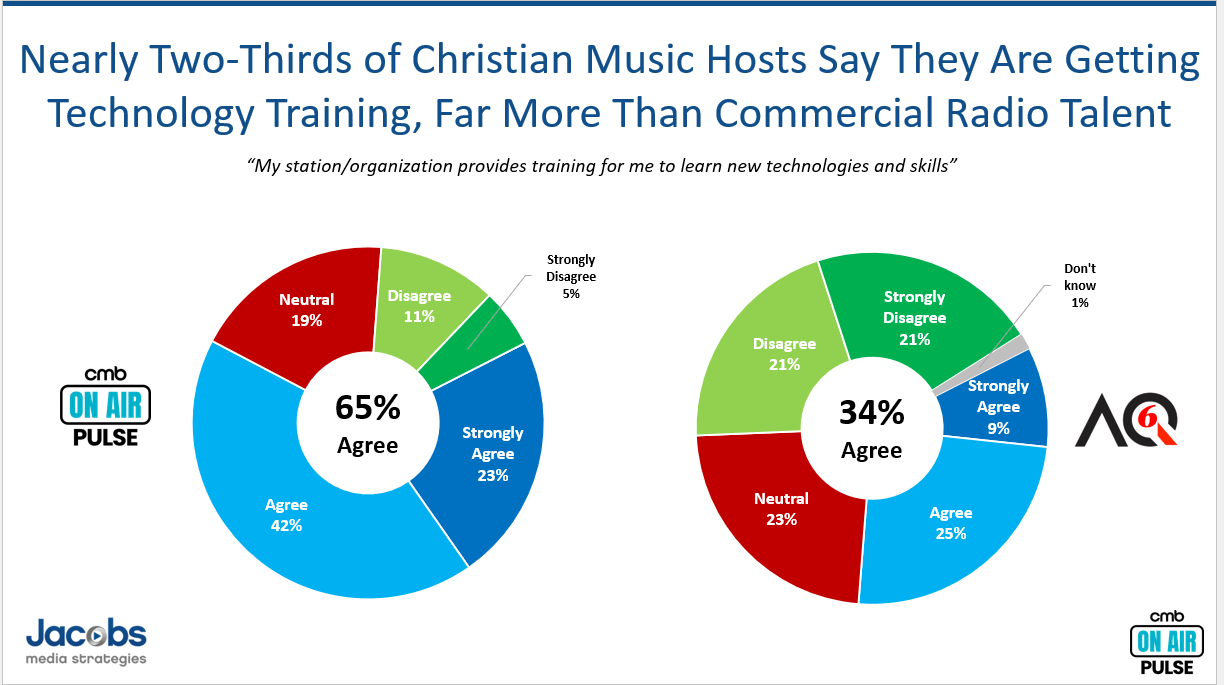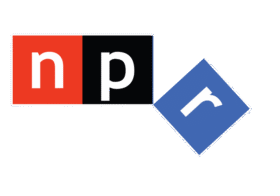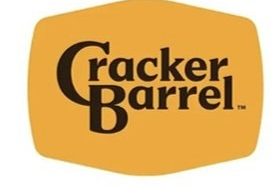
Many years ago when I first was getting Classic Rock off the ground, my most important accomplishment was garnering industry-wide attention. My biggest market to that point was Los Angeles, and a few months earlier we launched KLSX—a sign-on that had immediate impact.
In just a few months, the mighty KMET threw in the towel, ending its storied run. And KLOS was truly in our crosshairs. While neither station had a competitive morning show, our music and the programming prowess of legendary ABC guru, Tom Yates were a powerful combination.
 KLSX’s previous incarnation was KBZT—K-BEST—an also-ran AC station with a perennial 1-share. That may not seem like much, but back in L.A. in the late ’80s, you could make a nice living from a station with those ratings. And while Greater Media did, they wanted more. They were already seeing the sweeping impact of Classic Rock and suspected someone would bring the format Southern California. So why not them?
KLSX’s previous incarnation was KBZT—K-BEST—an also-ran AC station with a perennial 1-share. That may not seem like much, but back in L.A. in the late ’80s, you could make a nice living from a station with those ratings. And while Greater Media did, they wanted more. They were already seeing the sweeping impact of Classic Rock and suspected someone would bring the format Southern California. So why not them?
True story: After the third strong book in a row, KLSX surprised me on my next visit to L.A. When I went to pick up my car from National, they informed me they had just started a classic car rental program, and that GM Bobby Moore had arranged for me to choose one of these beauts for myself. There were about a dozen of these beautiful vintage cars in a special area of the lot, and I opted by a ’57 Thunderbird convertible.
I learned two things from this experience. First, no one in L.A. was the least bit impressed with my classic wheels. In a market where every other vehicle was a Porsche, a Ferrari, or other exotic car, my T-Bird was just another car on the 405.
And second, the cars may have been rehabbed, but they were still old. In this case, that Thunderbird was already in its fourth decade and like most older cars, it had some issues. Opting not to mess with the convertible top leaving LAX, the moment I got on the freeway, the top blew back and I had to pull over to try to secure it. The car also didn’t steer particularly well (no power steering) and when you hit the brakes, the car leaned heavily to the passenger’s side. I couldn’t wait to turn it in.
As it turned out, KLOS landed Mark & Brian, and soon regained its footing and its rock dominance. And KLSX actually had Phil Hendrie, but we couldn’t figure out how to channel and optimize his immense talent.
Still, the Classic Rock format was especially popular in L.A., and KLSX had a nice run. During another market visit, I went to dinner with Greater Media’s head of programming, the late Julian Breen (pictured). He was a deep thinker, a truly cerebral guy, and he enjoyed challenging—OK, maybe testing—people with intricate, philosophical problems.
He was a deep thinker, a truly cerebral guy, and he enjoyed challenging—OK, maybe testing—people with intricate, philosophical problems.
And that evening, he had a doozy. The Internet was still a nascent technology, but Julian saw it coming. Here’s the problem he posed to me:
One day, there will be an infinite number of radio stations available to the average listener. Every format will be represented, and in fact, there may be a half dozen different variations of Classic Rock focused on fragments of what it sounds like today. And anybody and everybody will be able to launch their own personal radio stations featuring music they program themselves to be enjoyed by their friends and family members who will be able to access and listen to it.
So, if and when this theoretical ecosystem comes to exist, how will a station like KLSX remain competitive…and dominant in this new world of personal radio?
Well, suffice it to say, my appetite quickly waned and I promptly forgot what I was eating. And I tried to respond to Julian’s big hairy question as best I could, citing our stellar airstaff as well as our local market presence. I hoped that logic would sate him or stall him, because in reality, I had no earthly clue how to respond to the gigundous dilemma he came up with. In fact, I honestly didn’t want to think about Julian’s fantasy world filled with legions of competitive chaos.
Except that’s the world we’re living in now. If you work in radio in 2025, you’re not just up against radio stations up and down the AM and FM bands—you’re up against countless worlds of competition from streaming to satellite radio to podcasts. Julian’s hypothetical world of endless radio stations has come to pass. And today’s radio programmers are up against everybody.
Just having a good morning show and focusing on your local market are both smart strategies, of course. But are they enough to be that defining difference that can set your brand apart?
The more I look at the radio landscape 35 years after Julian ruined that meal with his monster question, the more I think a big difference-maker is mission. Those who have one—especially one that matters to a lot of people—have an edge up against everyone else simply going through the radio motions, merely putting on a good-sounding station—which is no longer near enough.
And the more I study the broad world of radio here in the U.S., the more I see mission as a true differentiator. Another way to put it is that gnawing question, “What does your radio station stand for?”
Stating that you’re the country station in Syracuse or that you’ve got the #1 morning show in Omaha isn’t a sufficient answer—not enough to make a lasting difference in this ever-complicated competitive matrix we’re living in.
Neither of those is the station’s mission. Nor is a response that equates mission with simplistic ratings and revenue goals. Those numbers may tell a part of a station’s story. But your ranker in a ratings book or your standing in Miller-Kaplan says very little about your station’s true brand essence, the combination of qualities that makes the station a special place.
It wasn’t that long ago when radio broadcasting companies were hiring expensive consultants to help them develop a cogent “mission statement” that would tell the world—as well as your staff—what your organization is truly all about. They paid a lot of money for the management team to essentially write that statement of purpose. Most of the time, they ended up framed in the lobby, ignored by visitors and staffers alike.
Even Facebook’s original mission now seems dated, and misses the mark a full 13 years after they developed it. Maybe that’s because the essence of a true mission is that it’s inherent in a brand’s fabric. I’m seeing this more and more when I do side-by-side analyses of our new study of air personalities in Christian music radio and compare these findings to our AQ studies comprised of commercial radio air talent.

In virtually every dimension, talent working in the Christian music world are eminently happier than when they worked in “secular radio.” The more we A:B’d the two radio platforms, the more we saw clear differences in the ways personalities are enjoying their work and their careers.
The chart below illustrates the contrast between these two “radio planets.” Clearly, there’s a strong sense about how Christian stations are working to improve the overall environment, in this case technology training, an essential building block for growth.

In fact, you could make the case that radio broadcasters are developing mission pecking orders that meaningly explains the separation between commercial, public, and Christian music radio formats.
Our Net Promoter recommendation scores are a helpful way to understand the brand essence differences between these forms of radio. Below is an expanded ranker of those who would willingly recommend their station to the market by platform.

Christian music radio leads the pack, followed by public radio. And when you think about their respective missions, the logic falls into place.
At its core, the intrinsic mission for Christian music radio is a most powerful one—they believe in God, Jesus Christ. Throughout modern history, it’s perhaps the most powerful mission statement, especially important when things in the country are more difficult for regular folks to navigate. With a NPS of 82 (it has been trending “up” in recent years), Christian music radio’s NPS is massive, greater than the average for all commercial radio—a NPS of 46—depicted by the blue crosshatch bar on the chart above.
This speaks to the power of an impactful mission – something Christian radio has enjoyed these past several years as so many of us question everything. No wonder, these Christian stations have a decided edge when it comes to their powerful mission.
Public radio ranks a solid second, but is trending downward in recent years. Its NPS is in the shadow of the CMB sample, but also comfortably ahead of the commercial radio scores and where they rank. In fact, even in its weakened state, the public radio NPS is well ahead of the best commercial format, CHR, with a score of 55. Our new Public Radio Techsurvey 2025 will be presented next week at the Public Media Content Conference. We’ll be hoping to see an NPS recovery.
Key to its mission are public radio’s “core values,” a series of statements of purpose about how these stations will operate. When they were developed way back in the 1970s, public radio’s mission was printed on laminated cards programmers carried with them at all times. Looking at these “qualities” through today’s lens of information presented by cable news and social media, public radio’s “core values” may be even more relevant now in an environment of cable news and social media where objectivity and facts are often few and far between. The question is whether pubic radio can reassert its essence at a time when so many media outlets’ credibility is strained.

Clearly, both Christian and public radio platforms have a leg up over commercial when it comes to mission. Developing more mission and fewer formattics may, in fact, be a big part of the challenge ahead. Many commercial companies are also walking that tricky line between their historic radio roots and their sprawling and aspirational digital media goals.
To succeed in this test of missions, commercial radio will need to start thinking “audience first” as it pulls back and addresses how its many stations can be relevant and important again, rather than simply echoing radio from decades past.
As many of you know, we’ve been consulting the Children’s Miracle Network for several years, working with them to continue to grow their number one source of revenue: radiothons. Despite all claims to the contrary about the demise of the medium, commercial radio stations continue to deliver for them in big ways, raising significant money for their local children’s hospital. And if you’ve ever listened to one of these radiothons, you hear a clear sense of mission. These events bring together all aspects of the local community—families, local businesses who sponsor the event, the children’s hospital, and of course, local air personalities—to bond in a sense of mission for a couple of days to truly change children’s and families lives.
Many stations regard these initiatives as more than just a two-day disruption of programming, but rather, an essential part of their brand essence. They understand that they are more than just the music they play and contests they run. They are a key part of their communities, and they share their mission with their audience—to improve life in the communities they both live in.
If the goal is for all radio to step up its customer service focus, commercial radio broadcasters have a lot of work to do. Riding shotgun with the audience, and putting ourselves in their shoes goes to the heart of determining a new mission that has as little-to-do with ratings and revenue as possible. Yes, commercial radio still has to perform on these two performance measures, but if the goal is to not just survive but to thrive, radio will need to incorporate more mission-based qualities and attributes or risk being left behind.
Mission is everything.
Mission matters.
Originally published by Jacobs Media








